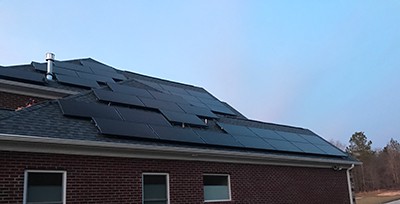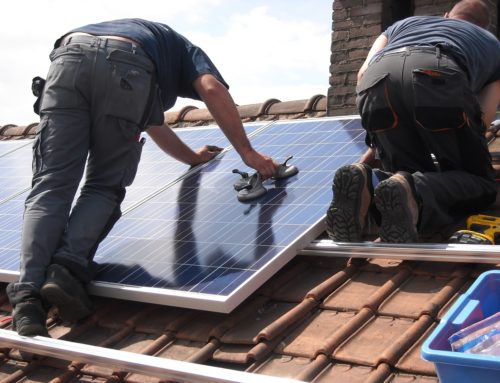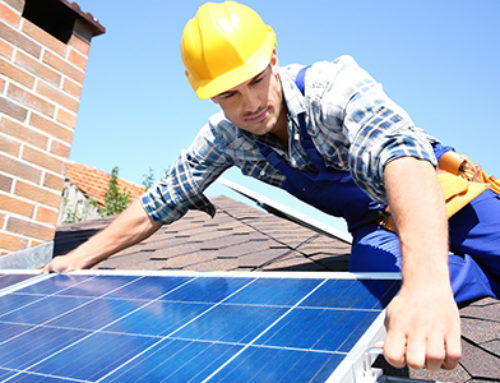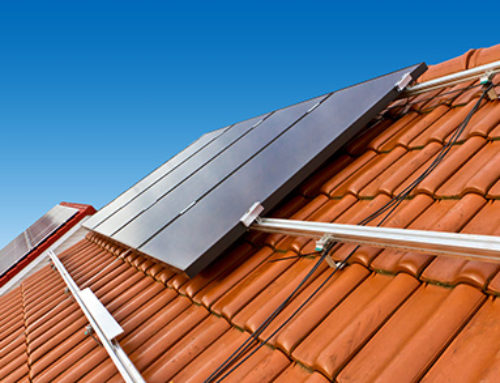It’s easy to understand why going solar can be a wise decision and a worthy investment if you live in southern California.
But, how do solar panels work in not-so-sunny places? How does rain affect solar panels? Do solar panels work on cloudy days? How do rain and clouds affect the energy production of your solar panels?
To answer these questions, below are the three important things you should take note of when it comes to weather and solar panels.
#1. Solar panels don’t need direct sunlight to work
Solar panels produce energy by utilizing a panel cell that converts sunlight into electricity. If the sun’s particles, or photons, reach the panel cell, the panel converts these photons into electrons of direct electricity. Direct electricity is then converted to alternating current power via an inverter, and this is the electricity we use in our homes.

Now let’s address the misconception: solar panels don’t need to be hit by sunlight directly in order to work. Yes, solar panels rely on the sun in order to have something to convert into usable energy, but it doesn’t necessarily need direct exposure.
Panel cells only need the photons that the sun emits during the daytime. To put it simply, even on a cloudy day, the sun’s photos are still in the atmosphere and these are what the panels absorb. Having said that, panel cells preferably need direct sunlight to absorb the highest amount of energy it can get.
Solar panels can only produce around 10 to 25 % of their capacity on a cloudy day. This range can be affected by several factors, such as the quality and type of solar panel used and depending on how the dense the clouds are.
#2. Solar panels can handle a wide range of weather conditions and climates
Most solar panels are built so they can handle even the most challenging weather conditions, be it rain, hail, strong winds, and low and high temperatures. For areas frequented by snow, rain, and storms, this is good news.

When solar panels are being manufactured, each panel is tested to see if it can withstand challenging weather conditions with the goal to receive an Underwriter’s Laboratories (UL) certification. Solar panels marked by UL automatically make them a legit product, but it still doesn’t change the fact that all solar panels differ in quality and durability. The certification simply signifies that the product has been tested, enabling the product to be sold in the market.
So you shouldn’t be concerned of cold temperatures, snow, and high winds. All weather panels are designed to handle winds of up to 140 MPH. Don’t worry about snow either, as cold temperatures can actually improve the output of your solar panel snow uses. Moreover, white snow actually helps in reflecting light, which in turn will enhance the photovoltaic performance of the solar panel snow. Just make sure your panels aren’t covered in snow. Yes, they will eventually melt and slide off the panels, but to be safe, avoid build up by simply brushing it off with a broom.
This is not to say that solar panels are indestructible. In extreme cases, hail and solar panels, along with lightning can cause damage. It’s important, therefore, to check your insurance policy if it covers solar panel damage along with your product warranty.
It’s also worth noting that extremely high temperatures may stunt the efficiency of your solar panels. Should it happen that the temperature is above 87 degrees Fahrenheit, a +1 increase can decrease the efficiency of the panels by 1%.
#3. Solar panels can last for up to 25 years or more
As long as your panels are durable and are made with high-quality materials, it’s guaranteed that your panels won’t be affected by hail and solar panels weather problems.

In fact, quite a lot of top rated weather and solar panel manufacturers guarantee that their system will give out approximately 92% of its rated power after 25 years of usage.
When your panels are durable, you also get the benefit of having your roof protected from extreme weather conditions. Think of it like a shield or a barrier. Many solar panels can handle weight, so if your panels have been tested for durability, the more efficient they are in handling the weight from hail or snow.
Maintenance of Solar Panels for Every Weather
Your solar panels will need to be hosed down once in a while. If you live in an area where pollen is a common problem or you’re near the desert, hosing off your panels should be done more frequently. But in other areas, you’re good with a once or twice a year cleaning.
If you can handle the weight of the hose, you can do the cleaning by yourself. If you want your panels to be properly cleaned, however, use a soft fiber attachment or an extendable wand. After clean, hose it down thoroughly to remove all traces of soap.
It’s okay if you want to clean your solar panels by yourself, but you carry the risk of voiding your warranty if you managed to scrape your solar panels. A simple scrape can cause micro-etching on your panel’s surface, reducing its efficiency. Be careful not to use harsh chemicals or any abrasive material that can damage your panels.
If you find it impossible to clean your solar panels, enlist the help of professional cleaners for the maintenance of solar panels. This way, you won’t have to brave the roof by yourself and you’re guaranteed of squeaky-clean panels afterward.
Solar Panel Warranties
Most solar panel systems come with three or four warranties. Ask the manufacturer or your professional installers about the following:
- Production warranty – This is the warranty most people refer to when getting a solar. This warranty is the guarantees a certain term, which is often 25 years. A production warranty also guarantees that your system will produce a certain percentage over a long term, and will have an annual drop in output of 0.7% yearly.
The term of a production warranty, which in this case is 25 years, refers to the pane’s “useful life.” However, there have been many instances that the panels still continue to work even after the manufacturer’s given term. Note that this warranty only covers panels that have not been damaged yet.
- Solar equipment warranty – This warranty covers panels that are not working due to an error in its manufacturing process. This usually covers 5 to 10 years after installation, which is more than enough time to notice if there is solar panel damage. Solar equipment warranty should also include repair or replacements in your home and not at the facility of the manufacturer.
- Installation warranty – This warranty gives owners the guarantee that their panels will remain fully functional despite an error committed on the installer’s part. Installation warranties only cover a few years after the date of installation.
- Inverter warranty – This warranty protects the panel’s DC to AC inverter, which should last for five years up to a decade, though some inverter companies actually offer extended warranties of up to 20 years.
Proper Installation for Weather Defiant Solar Panels
To make sure that any type of weather won’t cause your solar panels to be less efficient, remember that the secret is in the installation process. You’re investing a good amount of money here, so ensure that your solar installers have already established a name in the solar industry.
Choose a solar panel installer who understands the weather in your area, and can help you pick which solar panels for your needs. It might come off as a hefty investment initially, but the benefits that come with using all weather panels are far more valuable in the end.


